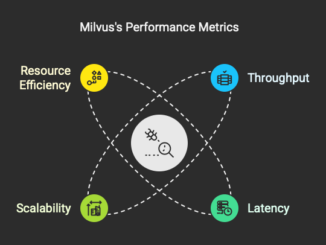Log File Synchronization in InnoDB
Log file synchronization plays a crucial role in the performance and reliability of MySQL’s InnoDB storage engine. The efficiency and speed of log file synchronization directly impact database throughput, latency, and durability. Here’s how this process influences InnoDB performance:
1. Transaction Durability
- Guaranteeing ACID Properties: The synchronization of log files ensures the ‘Durability’ aspect of ACID (Atomicity, Consistency, Isolation, Durability) properties. When a transaction is committed, changes are first written to the log file before being applied to the database. This means that even if the system crashes immediately after a commit, the transaction can be recovered from the log.
- Impact on Performance: Ensuring durability requires writing to disk, which is significantly slower than in-memory operations. The frequency and method of these disk writes (synchronous vs. asynchronous) can greatly affect transaction commit times and overall system throughput.
2. Write-Ahead Logging (WAL)
- Reduced IO Operations for Data Pages: By using a write-ahead logging strategy, InnoDB can reduce the number of disk writes required for data pages. This is because it’s not necessary to write modified data pages to disk immediately; instead, ensuring that the log records are flushed to disk is sufficient for data recovery.
- Checkpointing Overhead: Periodically, InnoDB will perform a checkpoint, writing all modified pages to disk and synchronizing the log. While this process helps manage the size of the log and ensures data integrity, it can also introduce performance overhead due to the increased IO operations.
3. Log Buffer Management
- Buffer Size: The size of the log buffer determines how much data can be stored before needing to be flushed to disk. A larger log buffer reduces the frequency of disk sync operations, improving performance. However, it increases memory usage and potential data loss during crashes.
- Flush Strategy: The strategy used to flush the log buffer (e.g., at each commit, periodically, or when full) influences both the durability and performance. More frequent flushes improve durability at the cost of increased disk IO and potential bottlenecks.
4. Disk IO and Hardware Considerations
- Storage Performance: The underlying storage system’s performance (e.g., HDD vs. SSD) significantly impacts log file sync operations. SSDs, with their faster write speeds, can greatly improve log sync times and, by extension, transaction commit times.
- fsync() Overhead: The use of
fsync()or similar system calls to flush data to disk is a necessary step for ensuring durability. However, the efficiency of these calls depends on the operating system and the filesystem, potentially introducing latency.
5. Concurrency and Throughput
- Lock Contention and Concurrency: High concurrency can cause log file sync contention, particularly when each transaction commit demands a log flush.. This contention can become a bottleneck, limiting throughput and increasing latency.
- Tuning for Performance: By adjusting InnoDB settings related to log file management (such as
innodb_log_buffer_size,innodb_flush_log_at_trx_commit, andinnodb_log_file_size), administrators can tune the balance between durability, performance, and throughput based on specific application needs.
In summary, log file synchronization is a balancing act between ensuring data durability and maximizing performance. Carefully tuning the InnoDB log system helps achieve an optimal balance of reliability and speed to meet application needs. Understanding and optimizing these aspects are key to maintaining high-performing and resilient MySQL databases.


